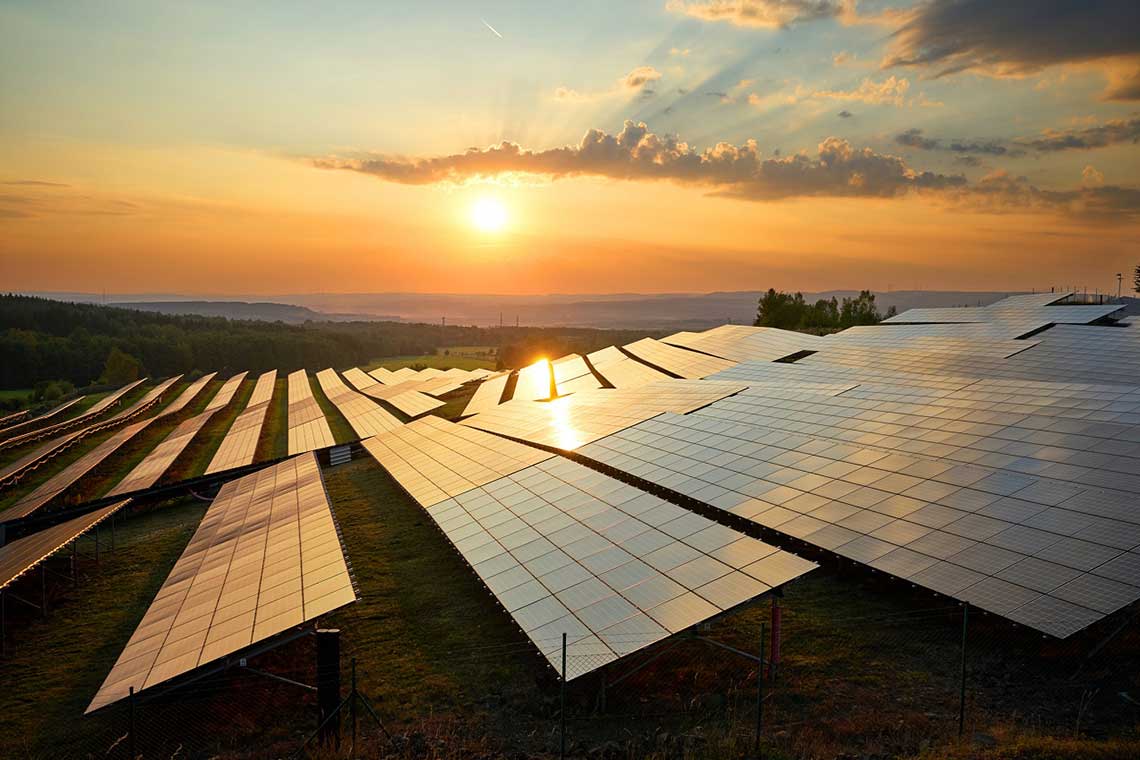
Image: Getty
New statistics published by the Department for Business, Energy and Industrial Strategy (BEIS) show another significant drop in the expected costs of solar out to 2040, with figures for the expected costs of storage technologies also released.
The Electricity Generation Costs document details forecasts for the levelized cost of energy (LCOE) across a number of electricity generation technologies. The most recent iteration – published yesterday (24 August 2020) – shows that the government expects large-scale solar PV to be developed at a LCOE of £44/MWh in 2025 in its central cost scenario, a significant drop when compared to its 2016 forecast, which placed solar at £68/MWh.
The majority of the £44/MWh figure consists of construction costs (£30/MWh), followed by fixed O&M (£10/MWh) and the rest made up of pre-development costs.
Costs then continue to fall to £39/MWh in 2030, another drop from the 2016 forecast which expected solar to be developed at £60/MWh, and an even bigger drop compared to three years prior.
The costs see further reductions in 2035, where they reach £36/MWh, and 2040, where they reach £33/MWh. This is, however, using BEIS’ central estimate, with costs having the potential to fall as low as £39/MWh in 2025 and £28/MWh in 2040, or be as high as £51/MWh in 2025 and £39/MWh in 2040.
The forecasts mark solar as the cheapest of the technologies outlined, beating both onshore and offshore wind – £44/MWh and £40/MWh in BEIS’s central 2040 forecast – as well as CCGT.
It also outlined expected costs of smaller scale PV, with the 10-50kW category coming in at £74/MWh in 2025 and £68/MWh in 2040, the 4-10kW category coming in at £86/MWh in 2025 and £81/MWh in 2040 and the <4kW category coming in at £114/MWh in 2025 and £107/MWh in 2040.
Solar Trade Association chief executive, Chris Hewett, said that whilst the industry has known “for a long time” that large-scale solar is one of the cheapest power technologies available, The STA is pleased that “this has now been officially recognised”.
“Now it is time for the government to set an ambitious target for the deployment of solar PV in the UK, as it has done with offshore wind. Our favoured goal, 40GW by 2030, aligns with recommendations made by the Committee on Climate Change and the National Infrastructure Commission, and is achievable with moderate policy support.”
Alongside the renewable generation forecasts, BEIS today also released research it commissioned from Mott Macdonald in 2018 forecasting costs for different battery technologies from out to 2050.
It covers a number of technologies across high, medium and low cost scenarios and a number of different use cases, including frequency management and peak lopping applications.
Lithium-ion battery storage remains consistently on the lower end across the different applications, with a CapEx of £342.90/MWh in the central scenario in 2050 for frequency management, Domestic Peak Lopping, Co-located Peak Lopping, Network Connected Peak Lopping and Distribution Peak Lopping. This drops to £193.80/MWh for Industrial and Commercial Peak Lopping.
For seasonal energy balancing – very long duration storage technologies used to help with energy balancing typically in the winter months where there are less renewables on the system – only one technolgies was considered, hydrogen, which came in at a central scenario CapEx of £779.80/MWh in 2050.
Other storage technologies saw a range of prices, with the likes of thermal storage shifting from a central scenario CapEx of £699.10/MWh in 2050 for Network Connected Peak Lopping to £997.3/MWh for Weekly Energy Balancing. This is a similar case for flow storage, with a central scenario CapEx of £349.20/MWh in 2050 for Network Connected Peak Lopping but £535.4/MWh for Weekly Energy Balancing.
